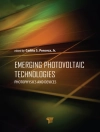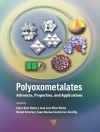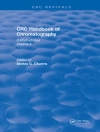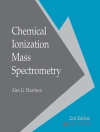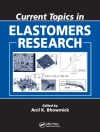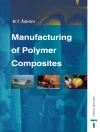Provides the tools needed to explore the incredible complexities of the earth’s soils
Now in its Second Edition, this highly acclaimed text fully equips readers with the skills and knowledge needed to analyze soil and correctly interpret the results. Due to the highly complex nature of soil, the author carefully explains why unusual results are routinely obtained during soil analyses, including the occurrence of methane in soil under oxidative conditions. The text also assists readers in developing their own analytical techniques in order to analyze particular samples or test for particular compounds or properties.
The Second Edition of Introduction to Soil Chemistry features four new chapters. Moreover, the entire text has been thoroughly updated and revised. It begins with a review of the history of soil chemistry, introducing fundamental concepts that apply to all soils. Next, the text explores:
- Basic soil characteristics, horizonation, texture, clay, air, water, solids, organic matter, organisms, and fundamental chemical concepts essential to soil chemistry
- Tested and proven sampling techniques for soil analysis that provide reliable analytical results
- Basic soil measurement techniques and extraction procedures
- Instrumentation to isolate and identify soil chemicals, including plant nutrients and contaminants
Detailed examples and figures throughout the text help readers successfully perform soil sampling and analytical methods as well as better understand soil’s chemical characteristics. At the end of each chapter, a bibliography and list of references lead to additional resources to explore individual topics in greater depth. Each chapter also offers problem sets, encouraging readers to put their newfound skills into practice.
Reflecting the latest research findings and best practices, the Second Edition of Introduction to Soil Chemistry is ideal for both students and soil chemists who want to explore the incredible complexities of the earth’s soils.
Inhoudsopgave
PREFACE xi
INSTRUMENTAL METHOD ACRONYMS xiv
COMMON HYPHENATED INSTRUMENTAL METHOD ABBREVIATIONS xv
ABBREVIATED PERIODIC TABLE OF THE ELEMENTS xvi
CHAPTER 1 SUMMARY OF THE HISTORY OF SOIL CHEMISTRY 1
1.1 The 19th Century 3
1.2 The End of the 19th and the Beginning of the 20th Century 8
1.3 The 20th Century 11
1.4 The End of the 20th and the Beginning of the 21st Century 14
1.5 Conclusion 15
Problems 15
References 16
Bibliography 18
CHAPTER 2 SOIL BASICS PART I: LARGE FEATURES 19
2.1. Horizonation 28
2.2 Peds 33
2.3 Soil Color 36
2.4 Soil Naming 38
2.5 The Landscape 39
2.6 Relationship of Large Features to Soil Chemistry, Soil Analysis, and Instrumentation 40
2.7 Conclusions 42
Problems 42
References 43
Bibliography 43
CHAPTER 3 SOIL BASICS PART II: MICROSCOPIC TO ATOMIC ORBITAL DESCRIPTION OF SOIL CHEMICAL CHARACTERISTICS 44
Soil Components Independent 45
3.1 Soil Solids 45
Soil Components Interacting 53
3.2. Bonding Considerations 53
Soil Components in Combination 58
3.3 Surface Features 58
3.4 Energy Considerations 60
3.5 Reaction Paths 61
3.6 Steric Factors 62
3.7 Rate Factors 62
3.8 All Factored Together 63
3.9 Micelles 63
3.10 Coated Surfaces 63
3.11 Conclusions 65
Problems 65
References 66
Bibliography 67
CHAPTER 4 SOIL BASICS PART III: THE BIOLOGICAL AND ORGANIC COMPONENTS IN SOIL 68
Biota of Soil 69
4.1 Animals 69
4.2 Plants 71
4.3 Microorganisms 75
Biological and Organic Chemicals of Soil 79
4.4 Biochemical 79
4.5 Bioorganic 81
4.6 Organic Compounds 81
4.7 Analysis 87
4.8 Conclusions 89
Problems 90
References 90
Bibliography 92
Web Sites 92
CHAPTER 5 SOIL BASICS PART IV: THE SOIL AIR AND SOIL SOLUTION 93
5.1 Soil Air 94
5.2 Water 95
5.3 Solubility 98
5.4 Elements in Solution 99
5.5 Dissolved Gases 99
5.6 Compounds in Solution 100
5.7 Inorganic Ions in Solution 102
5.8 Organic Ions in Solution 104
5.9 Soil p H 105
5.10 The Soil Solution around Particles 106
5.11 Distribution between Soil Solids and Soil Solution 106
5.12 Oxidative and Reductive Reactions in the Soil Solution 108
5.13 Measuring Soil Water 109
5.14 Conclusion 112
Problems 112
References 113
Bibliography 114
CHAPTER 6 SPECIATION 115
6.1 Cations 118
6.2 Anions 123
6.3 Isolation of Species 128
6.4 Sampling, Sample Storage, and Speciation 129
6.5 Conclusions 130
Problems 131
References 131
Bibliography 134
CHAPTER 7 SOIL AND SOIL SOLUTION SAMPLING, SAMPLE TRANSPORT, AND STORAGE 135
7.1 Field Sampling 136
7.2 Sampling Cropped Land 147
7.3 Environmental Sampling 148
7.4 Other Environmental Sampling Situations 148
7.5 Sample Transport and Storage 148
7.6 Laboratory Sampling 149
7.7 Sampling the Soil Solution 153
7.8 Conclusions 155
Problems 156
References 157
Bibliography 158
CHAPTER 8 DIRECT AND INDIRECT MEASUREMENT IN SOIL ANALYSIS 159
8.1 Direct Measurements 160
8.2 Mediated Direct Measurement 166
8.3 Indirect Soil Measurements 168
8.4 Destructive Soil Analysis Methods 170
8.5 Soil Solution 171
8.6 Soil Solids 171
8.7 Conclusions 172
Problems 173
References 173
Bibliography 174
CHAPTER 9 ELECTRICAL MEASUREMENTS 175
9.1 The Basic Electrochemical Cell 177
9.2 Electricity Generation in Soil 177
9.3 Potentiometry (Electrodes in Soil Measurements) 178
9.4 Voltammetry 187
9.5 Electrical Conductivity 187
9.6 Time-Domain Reflectometry 188
9.7 Porous Block 189
9.8 Other Methods 189
9.9 Conclusions 189
Problems 190
References 190
Bibliography 192
CHAPTER 10 TITRIMETRIC MEASUREMENTS 193
10.1 Soil Titration 195
10.2 Titration of Soil p H 197
10.3 Organic Matter 200
10.4 Ammonia 200
10.5 Kjeldahl: Organic Nitrogen 202
10.6 Nitrite and Nitrate 203
10.7 Carbonate Determination 204
10.8 Halogen Ion Determination 205
10.9 p H–Stat Titrations 206
10.10 Conclusions 207
Problems 207
References 208
CHAPTER 11 EXTRACTION OF INORGANICS 209
11.1 Extraction Equipment 210
11.2 Water as a Soil Extractant 211
11.3 Acid Extractants 218
11.4 Extractants for Basic Soils 222
11.5 Microwave-Assisted Extraction 224
11.6 Ultrasonic Extraction 225
11.7 Sequential Extraction 225
11.8 Ion Exchange Resin Extractions 226
11.9 Surfactants 227
11.10 Conclusion 227
Problems 227
References 228
Bibliography 230
CHAPTER 12 EXTRACTION OF ORGANICS 231
12.1 Sampling Handling before Extraction 235
12.2 Extraction Equipment 235
12.3 Soil Organic Matter Extraction Solvents 243
12.4 Cleanup 247
12.5 Conclusion 250
Problems 250
References 251
Bibliography 252
CHAPTER 13 CHROMATOGRAPHY 254
13.1 Fundamentals of Chromatography 256
13.2 Gas Chromatography 257
13.3 High-Performance Liquid Chromatography 264
13.4 Thin-Layer Chromatography 265
13.5 Electrophoresis 267
13.6 Identification of Compounds Separated by Chromatographic Procedures 268
13.7 Quantification 270
13.8 Conclusion 271
Problems 271
References 272
Bibliography 273
CHAPTER 14 SPECTROSCOPY AND SPECTROMETRY 274
14.1 Spectral Overlap 275
14.2 Noise 276
14.3 The Visible Region 277
14.4 Ultraviolet Region 278
14.5 Infrared Spectroscopy 280
14.6 Nuclear Magnetic Resonance 286
14.7 Mass Spectrometry 287
14.8 Atomic Spectroscopy 288
14.9 Color Measurement: The Spectrophotometer 292
14.10 Regression Analysis 296
14.11 Relationship to the Original Sample 296
14.12 X-ray Diffraction 297
14.13 X-ray Fluorescence 297
14.14 Remote Sensing 299
14.15 Conclusion 299
Problems 300
References 300
Bibliography 303
CHAPTER 15 HYPHENATED METHODS IN SOIL ANALYSIS 304
15.1 Sample Preparation 307
15.2 Sample Destroyed 307
15.3 Nondestructive Methods 313
15.4 Triple Hyphenated Methods 314
15.5 Conclusions 316
Problems 316
References 317
Bibliography 318
INDEX 320
Over de auteur
ALFRED R. CONKLIN JR., Ph D, is Professor of Agriculture and Soil at Wilmington College, where he teaches soil science, organic chemistry, and chemistry and the environment. He is also the International Director of the International Undergraduate Research Symposium. The recipient of three Fulbright Awards, Dr. Conklin has more than four decades of experience extracting and analyzing soil samples from Africa, Asia, and North and South America.


